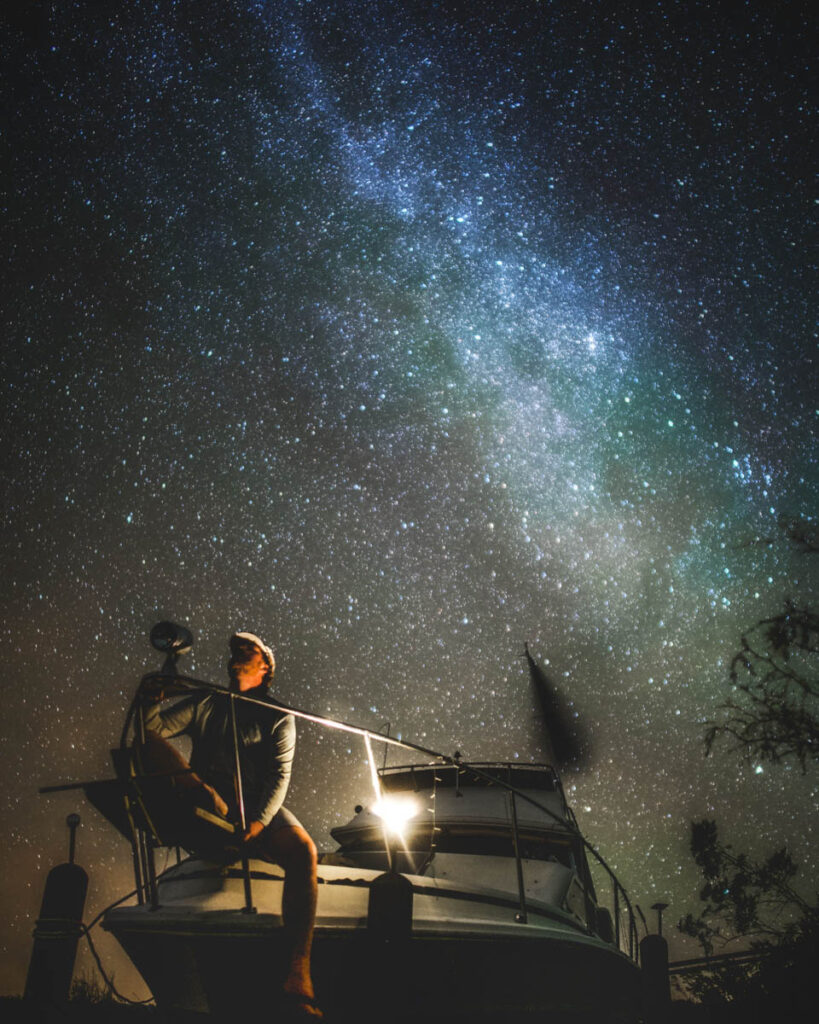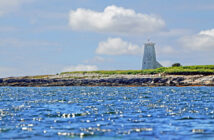
Some boaters will drive their boats in the darkness of night. Some won’t. My purpose in writing this blurb is to encourage those who do not boat at night to give it a try. A late-night cruise is not only a different side of boating, it can be an enjoyable and unique experience. So lets put a little adventure back in your boat.
More importantly, by becoming familiar with night driving techniques you will never be caught without experience when the need arises. Frequently, a boater’s first attempt at night boating is not by choice. Perhaps you stayed longer than intended at your daytime destination and now you find yourself at the helm in an uneasy situation.
Being comfortable driving your boat after dark has many advantages. Firstly, it will obviously increase your use of the boat. The daytrip destinations you are used to taking can be extended because you won’t be limited to daylight boating.
Opportunities to boat to more places will increase both your boat use and fun factor. Simply being on the water at night can be a relaxing experience, without the heavy traffic and a hot sun. I don’t need to point out the romantic side of casual cruising with a loved one on a starlit night. If nothing else, night boating is a change of pace from your usual travel routes by land, in a car.
Of course, not every safety director will tell you to go boating at night. Visibility is a key ingredient to driving anything, and when you restrict that — things can get tricky. Any problems that occur will turn serious more quickly and there are fewer boats on the water to help. But providing you take some basic and logical precautions night boating can be as safe as travel by road. As reference for those wanting to safely enjoy night boating, consider the following:
Know the Water
If you get lost on your lake in the daytime, think twice about heading out at night. The more familiar you become with a body of water, the easier it is to navigate at night. Should disorientation set in, one identifiable object can put you back on track. But not every night boating situation is on a familiar lake. There can be occasions when you are travelling in a larger boat to a distant destination. In these circumstances you need to closely study the applicable charts before departing on the route and note any areas that need special attention. Your equipment needs will also vary.
Legal requirements
For the most part, nautical rules are the same at night as they are during the daytime. Regulations include the normal gear, such as life jackets, fire extinguishers, carbon monoxide detectors, anchor paddles, flares and horn or working sound device. Lights must meet regulations and be fully operational. Tip: Navigation lights not regularly used may not immediately work due to due to corrosion, but leaving them on for a few minutes can often burn the corroded connection back into service.
Knowing the latest weather forecast is also a night boating must. Strong winds produce rough water and signal changing weather conditions. Should an incident occur, you could be held liable if you did not obtain a current forecast. It is also your responsibility to know of any areas where there are reduced speed limits in effect from sunset to sunrise.
Basic Stuff Checklist Prior to Departure
It’s always a smart idea to perform a pre-trip checklist before every trip. Here are some items that you may not need onboard for day cruising but become vital at night.
1) Two spotlights: One is enough, but one will always malfunction when needed.
2) Flares: Use sparingly and only in emergencies not just because it looks pretty.
3) Compass: This simple device is still the best way to maintain your orientation.
4) Snacks and water: Even at night, you can suffer from dehydration.
5) Glowsticks: One for each passenger, making it easier to find a person in the water.
6) Anchor: If you lose power, you don’t want to drift onto a rock.
7) Cell Phone: Can be your best friend providing it is charged.
8) Fuel: Check that the indicated fuel level is more than you think you need.
9) Warm clothing: Night boating is always 15 degrees colder than you figured.
10) Bug spray: In mosquito season, this can avoid the need for a transfusion.
11) Plan ‘B’: Imagine what could go wrong and come up with a solution in advance.
12) Electronic navigation equipment: See below:
Electronic Equipment
Todays wide selection of navigation equipment can provide you with an extra set of eyes. As a serious boater, you may already have one or more of the following: GPS/chart plotters, detailed electronic cartography, advanced radar, thermal imaging, and night-vision scopes. This latter item amplifies light through a scope and is ideal for navigating near shorelines and into harbours. Some effective brands can be purchased for under $300.
Yacht owners will testify that for cruising applications a back up model for each electronic device is a good idea. Backups have saved me on several occasions from that feeling in your stomach when your chart-plotter screen goes black. A more current electronic item that I find interesting is the automatic information systems, or AIS. On big water, an AIS system displays traffic within about 40 nautical miles of your boat. Click on a traffic icon and using transceivers the screen will read out the type of boat, its direction, its speed, its destination and sometimes who owns it. Very slick for under $1,000. Note: On small lakes AIS will not be effective because small boats are probably not signed up on the program.
Operational Considerations
While running at night, there are a number of driving tips that will enhance safety and confidence. Always operate at a speed that will allow you to stop quickly. Don’t push the “stand-on” rules for right of way. When you see another boat in your vicinity, “give way” or even stop until any possibility of collision has passed. Use your spotlight sparingly to locate reflective markers or specific objects, because the beam can temporarily blind or disorientate other drivers as well as yourself.
Four eyes are better than two, so ask for a volunteer and appoint them to work with you at the helm. Explain to them what to look for and how to advise you of obstacles, traffic, and markers. Turn off all unnecessary lights to save your night vision and possibly confuse other boaters.
Sounds at night are easier to identify than in daytime, and what you hear can be helpful. Listen for engines, horns, water sounds and voices. Ask your passengers to speak quietly and turn down the radio.
Larger boats should periodically adjust their GPS and radar settings to suit the course ahead. Set your depth alarm to advise you of any notable reductions in water depth. Of course, your VHF will be set on channel 16.
When begin your night boating adventures, with nights that have a bright moon. This will provide the practice you need without the risks. Remember, your passengers are your top priority. Try not to lose any and never look nervous.








